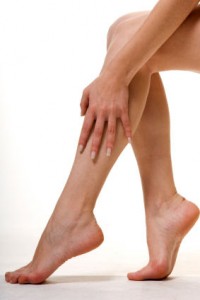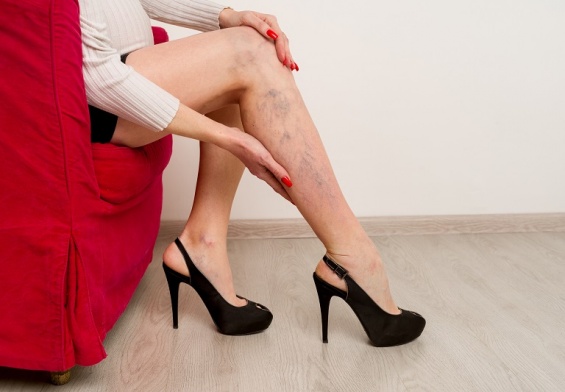When most people hear the term varicose veins, they automatically think that it means because you have varicose veins that they are only present in your legs. However, you might be surprised to know that varicose veins are present in other parts of your body as well. There are a few different types of varicose veins and many different options to get rid of each one of these types depending on the vein itself, type of varicose vein, the colors, sizes, etc. Below, we will be talking about all types as well as treatment for each one available.
Trunk Varicose Veins
This type of vein has a more “bulging” look and feel to it, but it tends to look worse when the person is standing rather than sitting. While these can be simple veins and nothing else, there are people that have complications with the veins because the provoke thrombophlebitis from occurring. Because of this the patient may also experience complications and skin disorders including things like fibrosis, ulcers that sometimes bleed, especially when touched or bumped and change in color. The most common form of treatment for Trunk Varicose Veins is Sclerotherapy. Laser Sclerotherapy essentially uses an injection of a liquefied substance made from a chemical compound into the vein itself. Not only is Sclerotherapy the most commonly used treatment for Trunk Varicose Veins, but it’s said to be the safest as well. Patients, almost 65% of them, won’t see any veins for up to 5 years after this type of treatment is done. Surgery, though present with these types of veins, is the rarest occurrence because usually it has to do with stripping the veins away – surgery is essentially the last resort when it comes to these types of veins.
Recurrent Trunk Varicose Veins
These don’t just appear on their own like the other veins you will see here. Instead, because these are secondary veins, they will show up after a varicose vain operation has happened. In some cases the Secondary or Recurrent Trunk Varicose Veins appear in smaller slower appearances, while in other cases they appear quite quickly and grow in numbers in different locations of the site of the operation.
Postphlebitic Varicose Veins
If you have any varicose veins, this is the one you would want the least – in fact, this one out of all of these, can cause the most issues in your health and in the area where its present which can include the face, arms, legs and hands. The reason these veins appear is because the patient has suffered from a venous thrombosis. The appearance of these types of veins in your skin shows an advancement of venous failure. In almost all cases, a doctor will not perform an operation on these kinds of veins because it could essentially lead to more of a health issue. Obviously since these are not operated on, there are really no medicinal treatments, but you could try a few alternative measures; acupuncture, eating healthier, exercising, etc.
Reticular Varicose Veins
This type of a varicose vein, tends to be the ones that can be seen more when standing upright, rather than sitting down. These veins can appear more on the skin or under the skin, but both can be through the skin and are often a greenish blue color. When people have this type of a varicose vein present in their leg, arms or hands, usually they don’t have any symptoms from the vein itself and very rarely do they actually become a health problem for the patient. While these can be seen through the skin, they are even more visible for people that have fairer skin. Like most of your other treatments here, Sclerotherapy is going to be the treatment of choice for most cases of Reticular Varicose veins. Though in some cases, you may be considered for avulsion. This treatment uses small incisions into and around the area of the veins to destroy the veins.
Telangiectasia Varicose Veins
Even though these are called “varicose” veins they are not the same exact ones that you think of when you hear the word varicose. Instead, these are tiny dilations inside of the capillaries. These are not harmful, they can be operated on if necessary i.e.; if they do hold a certain color characteristic to them or they are bothering you. But, for the most part, people tend to just leave them be. Two of the more common options as far as treatments go with Telangiectasia Varicose Veins are microinjections of a chemical compound to get rid of them or laser injections. However, in some smaller cases, high intensity light is also an option. It really depends on your age, the color and shape of the veins, as well as the appearance of the veins.




